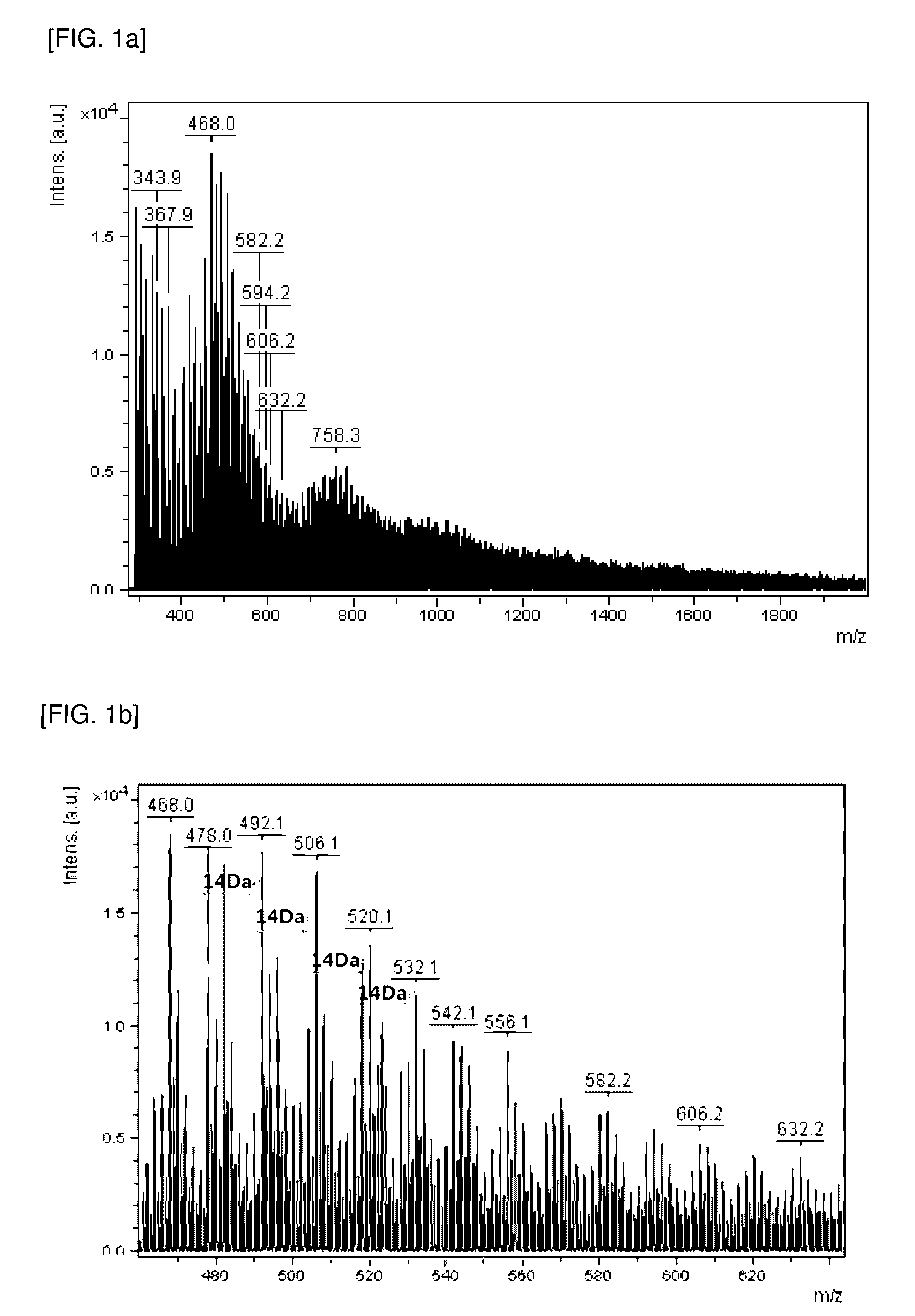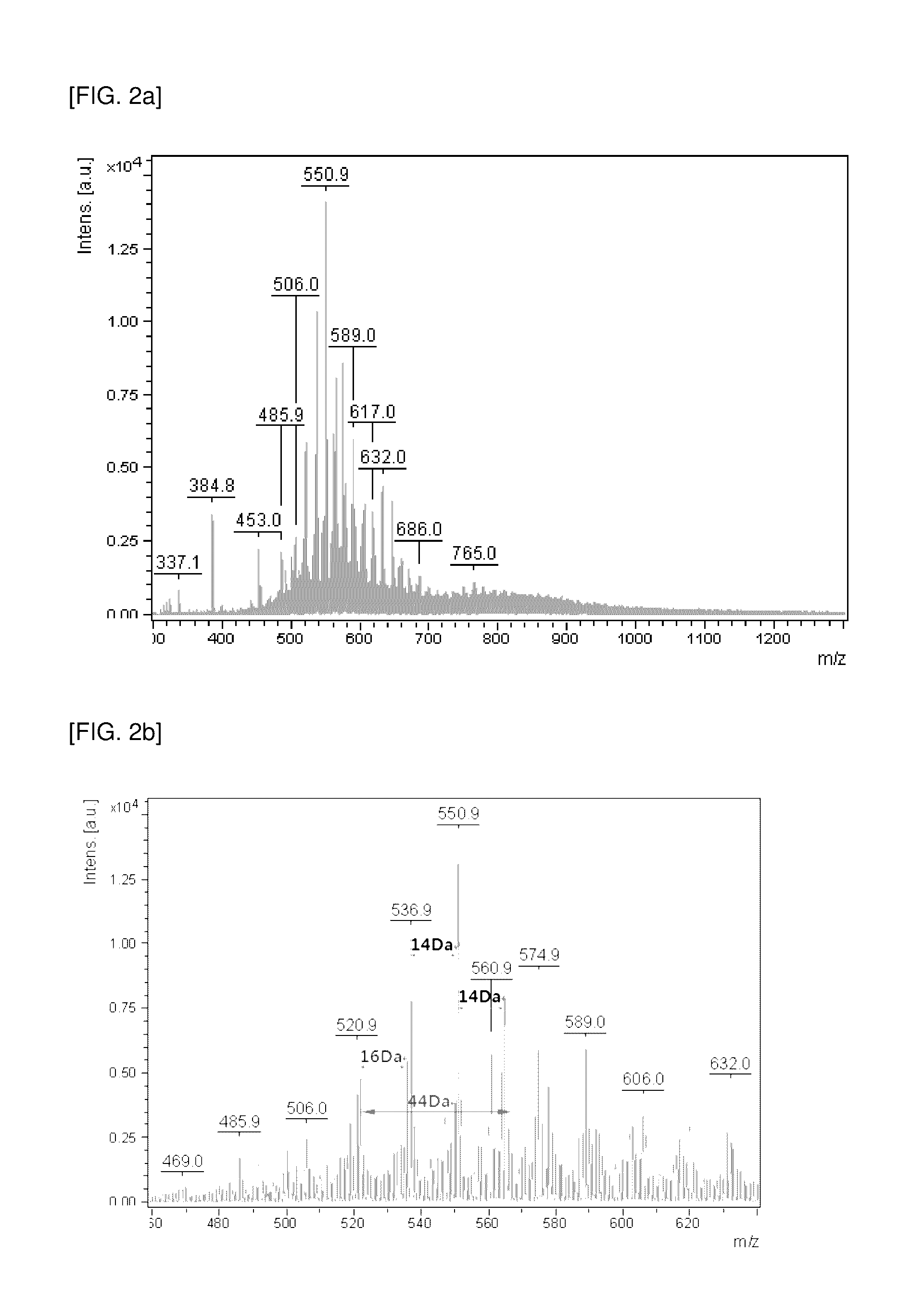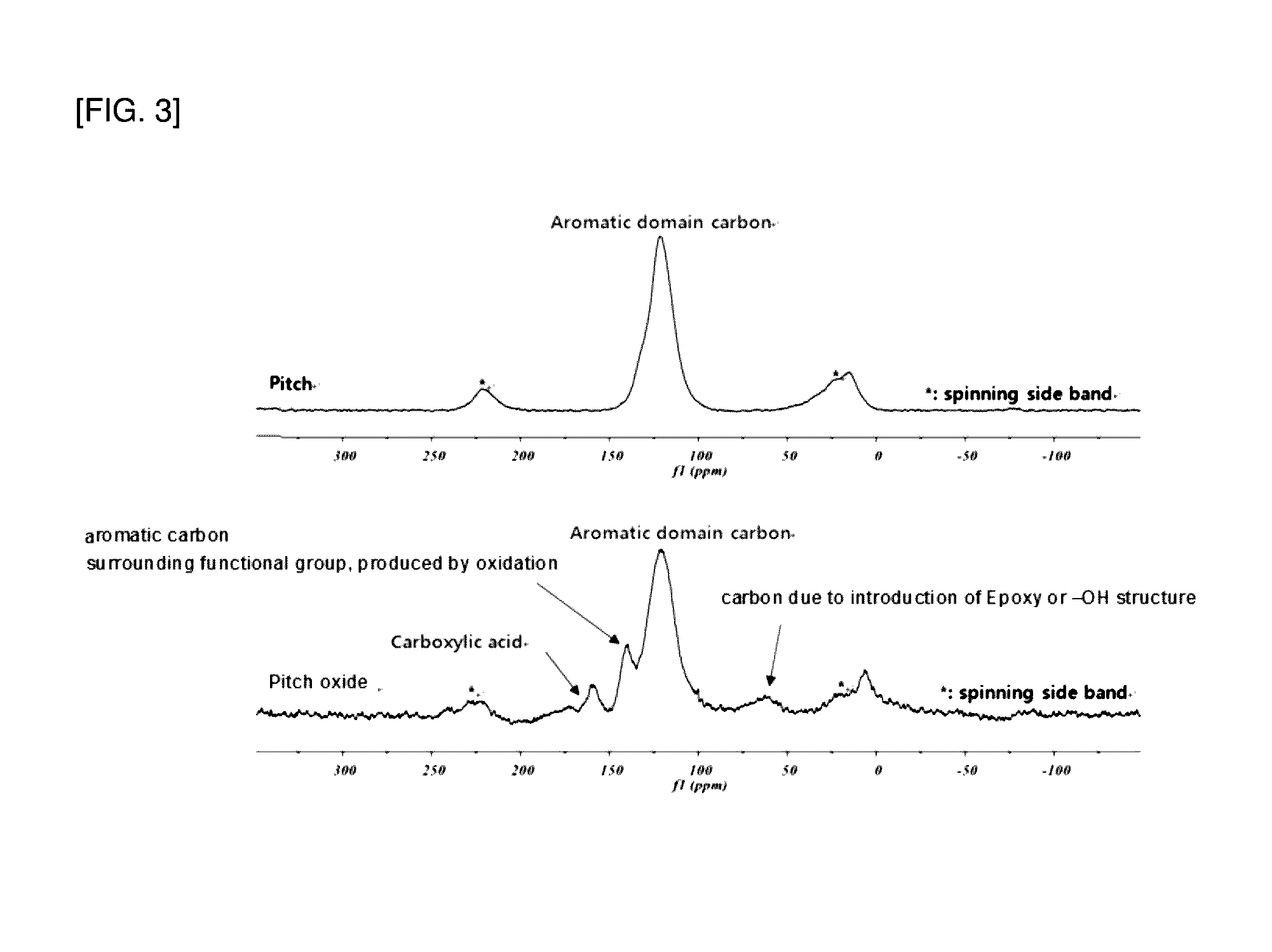Dispersing agent, its preparation method and dispersed composition of carbon-based material comprising the same
- Summary
- Abstract
- Description
- Claims
- Application Information
AI Technical Summary
Benefits of technology
Problems solved by technology
Method used
Image
Examples
example 1
Preparation of Dispersing Agent
[0062]Pitch which is a petroleum by-product obtained from POSCO was subjected to the following oxidation and purification processes to produce a dispersing agent of Example 1.
[0063]First, 0.5 to 1.5 g of pitch was added to 75 ml of a solution mixture of sulfuric acid / nitric acid (a volume ratio of 3:1) and oxidation reaction was performed at 70° C. for approximately 3.5 hours.
[0064]Thereafter, the pitch reaction solution resulting from the oxidation reaction was cooled to room temperature, and diluted with approximately 5 volumes of distilled water, followed by centrifugation at approximately 3500 rpm for 30 minutes. Subsequently, the supernatant was discarded, and the same amount of distilled water was added and resuspended, followed by centrifugation under the same conditions. Finally, the pellet was recovered and dried. Consequently, the dispersing agent of Example 1 was produced.
[0065]First, the molecular weight distribution of the pitch which was ...
examples 2 to 4
Preparation of Dispersing Agent
[0069]Pitch which is a petroleum by-product obtained from POSCO (however, this pitch was different from the sample used in Example 1) was used, and dispersing agents of Examples 2 to 4 were produced in the same manner as in Example 1, except that the oxidation reaction was performed for 1 hour (Example 2), 3.5 hours (Example 3) or 7 hours (Example 4), respectively.
[0070]These dispersing agents were analyzed by MALDI-TOF mass spectrum in the same manner as in Example 1, and the results are compared and shown in FIG. 5. Referring to FIG. 5, as the oxidation time was increased, the content of the components (polyaromatic hydrocarbon oxides) having a molecular weight of more than approximately 1000 or approximately 700 in the dispersing agent was decreased, and as a result, dispersing agents were obtained in the form of a mixture including the polyaromatic hydrocarbon oxides having a molecular weight of approximately 300 to 1000 or approximately 300 to 700...
experimental example 1
Measurement of Oxygen Content of Dispersing Agent
[0072]Each 1 mg of the dispersing agent samples obtained in Examples 3 and 4 was heated on a thin foil at a high temperature of approximately 900° C. At this time, while the foil was suddenly melted, the temperature was increased to approximately 1500 to 1800° C., and gas was generated from the sample due to the high temperature. This gas was collected and subjected to elemental analysis to measure and analyze the contents of carbon, oxygen, hydrogen and nitrogen. The analysis results are compared with those of the pitch used in the production of each dispersing agent, and shown in the following Table 1.
TABLE 1SampleC(wt %)H(wt %)N(wt %)O(wt %)Pitch95.54.5——Example 340.01.87.638.0Example 440.01.57.839.2
[0073]Referring to Table 1, when the content of each element in the dispersing agents of Examples 3 and 4 was analyzed, the oxygen content was approximately 12 to 50% by weight or approximately 30 to 40% by weigh with respect to the tot...
PUM
| Property | Measurement | Unit |
|---|---|---|
| Temperature | aaaaa | aaaaa |
| Time | aaaaa | aaaaa |
| Percent by mass | aaaaa | aaaaa |
Abstract
Description
Claims
Application Information
 Login to View More
Login to View More - R&D
- Intellectual Property
- Life Sciences
- Materials
- Tech Scout
- Unparalleled Data Quality
- Higher Quality Content
- 60% Fewer Hallucinations
Browse by: Latest US Patents, China's latest patents, Technical Efficacy Thesaurus, Application Domain, Technology Topic, Popular Technical Reports.
© 2025 PatSnap. All rights reserved.Legal|Privacy policy|Modern Slavery Act Transparency Statement|Sitemap|About US| Contact US: help@patsnap.com



